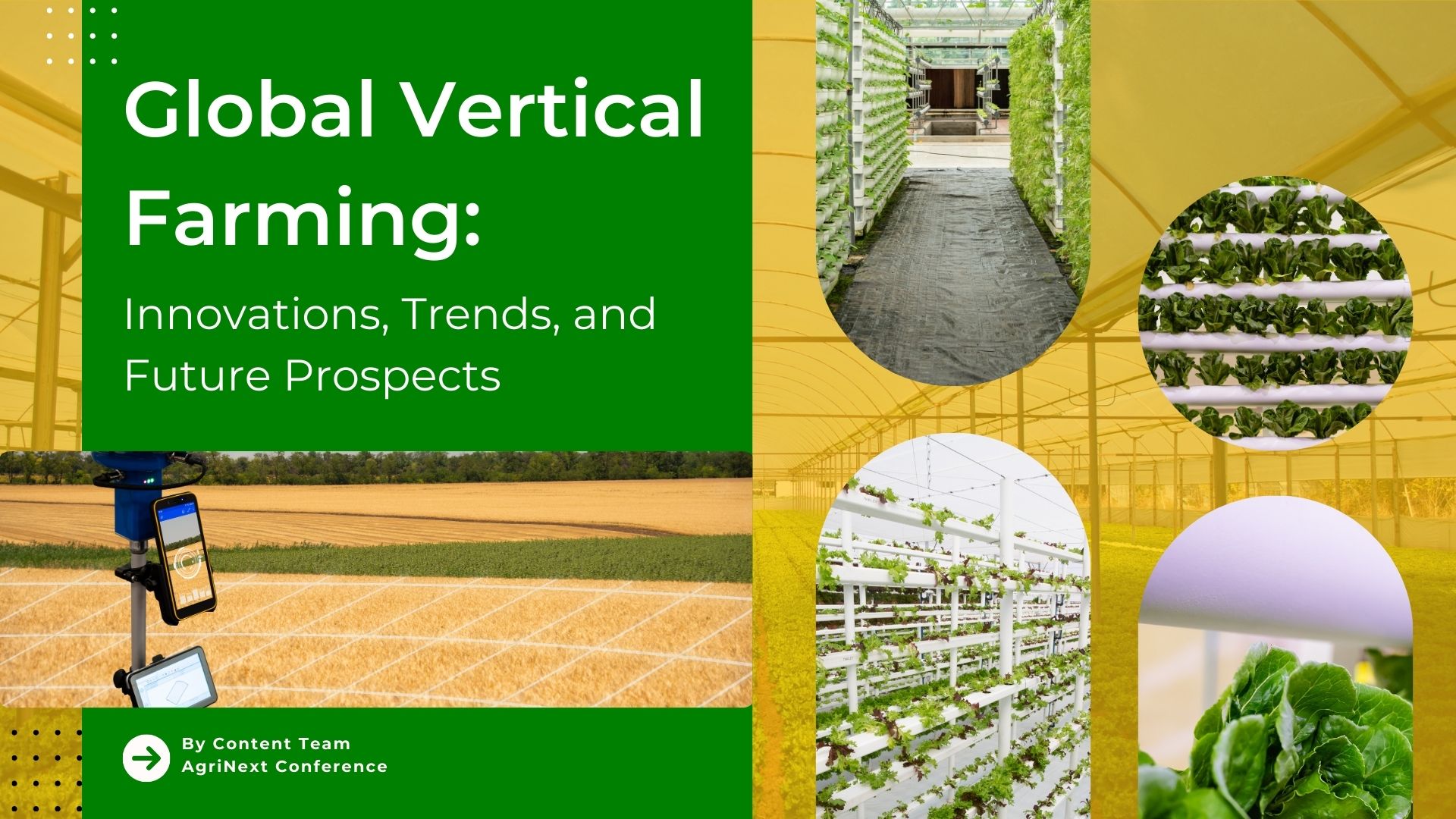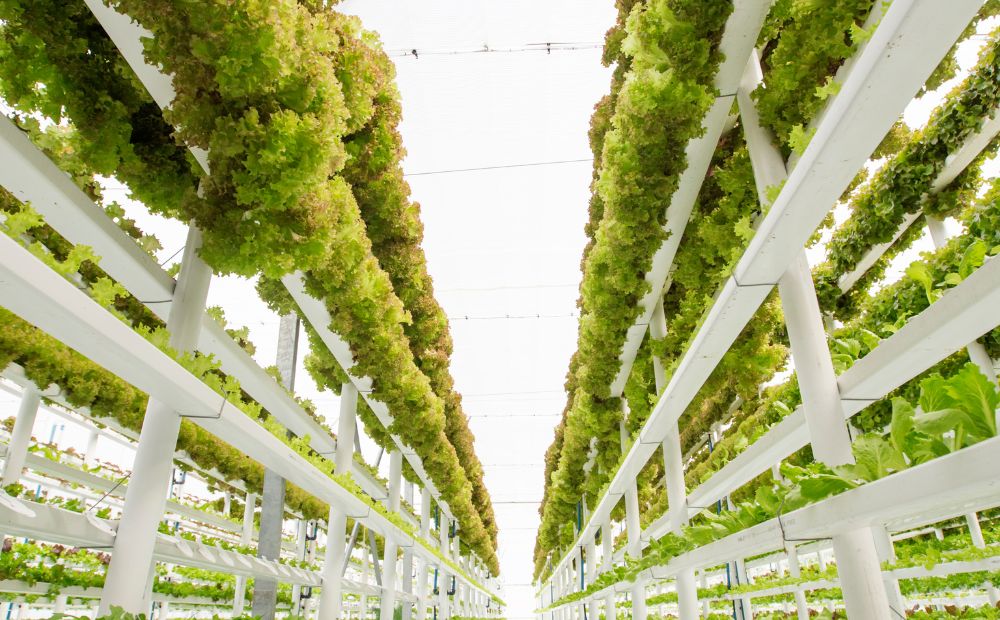
Introduction
Global vertical farming refers to the practice of growing crops in vertically stacked layers, using controlled environments, in various locations around the world. This innovative farming method is being adopted globally, from urban centers in the United States and Europe to regions in Asia and the Middle East.
Table of Contents
The Global Impact of Vertical Farming
Vertical farming is transforming agriculture by allowing crops to be grown in vertically stacked layers within controlled environments. This innovative approach is being adopted worldwide, providing sustainable solutions for food production in various climates and urban settings.
“Vertical farming is not just a revolution in agriculture but a necessity to sustainably feed the growing urban population.”
Dickson Despommier, a leading advocate and author of The Vertical Farm.
By using advanced technologies like LED lighting, climate control, and hydroponics or aeroponics, vertical farming ensures consistent crop yields year-round, regardless of external weather conditions.
“Vertical farming allows us to produce food with a fraction of the water, no pesticides, and minimal transportation. It’s a win for both people and the planet.”
David Rosenberg, CEO of AeroFarms
This blog explores the global impact of vertical farming, highlighting key regions adopting this technology, the innovative methods being used, and the potential benefits and challenges faced. For example, AeroFarms, the world’s largest indoor vertical farm, has successfully demonstrated how vertical farming can revolutionize urban agriculture.
Join us as we examine the exciting developments in vertical farming and its role in feeding a growing world population.

Key Innovations in Global Vertical Farming
Hydroponics and Aeroponics:
These soilless farming techniques use nutrient-rich water solutions (hydroponics) or mist (aeroponics) to nourish plants. They minimize water use and eliminate the need for soil, reducing pests and diseases.
LED Lighting:
Advances in LED technology have enabled precise control over light spectra, improving photosynthesis efficiency. This allows crops to grow faster and yields to increase while reducing energy consumption.
Automation and AI:
Automation in vertical farms includes robotic systems for planting, tending, and harvesting crops. AI algorithms optimize environmental conditions and resource use, enhancing productivity and reducing labour costs.
Energy Efficiency:
Integrating renewable energy sources, such as solar panels and wind turbines, helps vertical farms reduce their carbon footprint. Energy recovery systems and efficient HVAC systems also contribute to sustainability.
Data Analytics and IoT:
Internet of Things (IoT) devices and data analytics provide real-time monitoring and control over growing conditions. This leads to more precise farming practices and better crop management.
Global Trends in Vertical Farming
Urban Agriculture:
With increasing urbanization, cities worldwide are becoming hubs for vertical farming. Urban farms reduce the need for transportation, ensuring fresher produce and lower carbon emissions.
Investment and Funding:
Venture capital and governmental support are driving the expansion of vertical farming startups globally. Significant investments are being made in technology development and infrastructure.
A prominent name in investing in global vertical farming is SoftBank Vision Fund. SoftBank has made significant investments in companies like Plenty, a leading vertical farming startup. Another notable investor is Jeff Bezos, who has also invested in Plenty through Bezos Expeditions. These investors are helping to drive innovation and growth in the vertical farming industry worldwide.
Diversification of Crops:
Initially focused on leafy greens and herbs, vertical farms are now experimenting with a broader range of crops, including strawberries, tomatoes, and even staple crops like wheat and rice.
Sustainability Initiatives:
Vertical farming aligns with global sustainability goals. It offers solutions to food security challenges, reduces the environmental impact of agriculture, and promotes sustainable urban development.
Community and Educational Outreach:
Many vertical farms engage with local communities and schools, providing education on sustainable farming practices and healthy eating.
An example of community and educational outreach in vertical farming is the work done by AeroFarms. They engage in several initiatives, including:
Community Workshops and Tours:
AeroFarms offers tours of their facilities to local schools, community groups, and the general public to educate them about sustainable farming practices and the benefits of vertical farming.
Educational Partnerships:
AeroFarms partners with schools and universities to integrate vertical farming into their curricula. They provide resources and support for creating educational programs that teach students about urban agriculture, sustainability, and healthy eating.
Youth Programs:
AeroFarms collaborates with organizations like the Boys and Girls Clubs to create youth programs focused on nutrition education, urban farming, and environmental stewardship. These programs often include hands-on activities such as growing their own crops.
Regional Highlights
Asia: Countries like Japan, Singapore, and China are leading in vertical farming adoption due to high urbanization rates and technological advancement. Japan’s vertical farming industry is particularly advanced, with numerous high-tech farms producing a variety of crops.
Europe: The European market is expanding rapidly, with countries like the Netherlands, Germany, and the UK investing heavily in vertical farming technologies. These farms are often integrated into urban settings, contributing to local food security and sustainability.
North America: The United States and Canada are seeing a surge in vertical farming startups. These initiatives are supported by robust venture capital investment and a growing demand for locally sourced, sustainable produce.
Middle East: With harsh climatic conditions and limited arable land, countries like the UAE and Saudi Arabia are turning to vertical farming to ensure food security. Advanced technologies and significant government support are driving this growth.
Africa: Vertical farming is emerging as a promising solution to food security issues in African cities. Innovations are tailored to local conditions, focusing on affordability and resilience.
Leading Initiatives:
Several high-profile initiatives are spearheading the vertical farming revolution. From state-of-the-art facilities to community-driven projects, these endeavours are reshaping the world’s agricultural landscape.
AeroFarms
Based in Newark, New Jersey, AeroFarms is a leader in indoor vertical farming, utilizing aeroponic technology to grow leafy greens and herbs with minimal environmental impact.
Plenty
Located in South San Francisco, Plenty focuses on producing pesticide-free, high-quality produce through advanced vertical farming techniques, aiming to provide fresh food to urban populations.
Emirates Flight Catering – Dubai
One notable initiative is the Emirates Flight Catering Vertical Farm, a joint venture between Emirates Flight Catering and Crop One Holdings. This massive vertical farm, located near Dubai International Airport, produces a variety of fresh herbs and leafy greens for inflight meals and local consumption. By utilizing vertical farming techniques, the facility ensures a consistent supply of high-quality produce year-round, reducing dependence on imported goods.
Badia Farms
Another pioneering project is Badia Farms, the region’s first commercial vertical farm. Situated in the heart of Dubai, this innovative farm utilizes hydroponic systems to grow a wide range of crops in a controlled environment. By integrating cutting-edge technology with sustainable practices, Badia Farms demonstrates the potential of vertical farming to transform urban agriculture.
Upcoming Event: AgriNext Awards, Conference & Expo

One of the most anticipated events in the global vertical farming sector is the upcoming AgriNext Awards, Conference & Expo in Dubai scheduled on 13,14 November 2024. This event is a significant platform for industry leaders, innovators, and enthusiasts to come together and share insights, advancements, and future directions in vertical farming and sustainable agriculture.
AgriNext Awards: The awards segment recognizes outstanding achievements in vertical farming, honouring companies and individuals who have made significant contributions to the industry. Categories include technological innovation, sustainability practices, and community impact.
Conference: The conference will feature keynote speeches, panel discussions, and workshops led by experts from around the world. Topics will cover the latest research, emerging technologies, and best practices in vertical farming. Attendees will have the opportunity to engage in meaningful dialogues, gain new perspectives, and network with peers.
Expo: The expo will showcase the latest products and services in the vertical farming industry. Exhibitors will include technology providers, equipment manufacturers, and service companies. Attendees can explore cutting-edge solutions, witness live demonstrations, and connect with potential partners and suppliers.
Future Prospects Global Expansion:
Vertical farming is set to expand globally, particularly in regions facing food security challenges and limited arable land. Emerging markets in Asia, the Middle East, and Africa are poised for significant growth.
Technological Advancements: Continued innovation in biotechnology, materials science, and renewable energy will enhance the efficiency and scalability of vertical farms.
Economic Viability: As technology costs decrease and operational efficiencies improve, vertical farming will become more economically competitive with traditional agriculture.
Integration with Smart Cities: Future urban planning may integrate vertical farms into building designs and public spaces, creating green, food-producing infrastructures within cities.
Policy and Regulation: Supportive policies and regulations will play a crucial role in the growth of vertical farming. Governments may implement incentives for sustainable farming practices and urban agriculture development.
Conclusion
Global vertical farming represents a transformative shift in how we produce food, addressing the dual challenges of urbanization and sustainability. By utilizing cutting-edge technology and innovative practices, vertical farms are paving the way for a resilient and sustainable food future. As this field continues to grow and evolve, it holds the promise of making fresh, local produce accessible to urban populations worldwide, ultimately contributing to a healthier planet and society.
The AgriNext Awards, Conference & Expo 2024 stands as a beacon for the industry’s future, providing a platform for the exchange of ideas, recognition of excellence, and showcasing of innovative solutions that will drive the next wave of growth in global vertical farming.
Join us in Dubai this November 13&14 to witness the cutting-edge advancements that are transforming agriculture and to explore how these innovations can be applied to create a more secure and sustainable food supply for the world .
Signup For AgriNext Conference Newsletter

